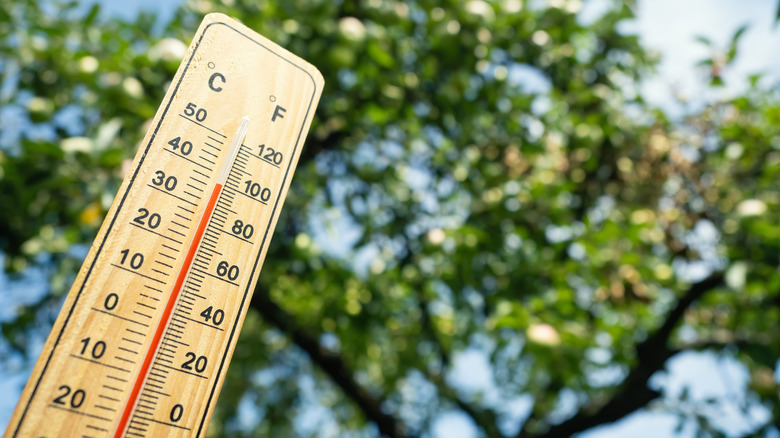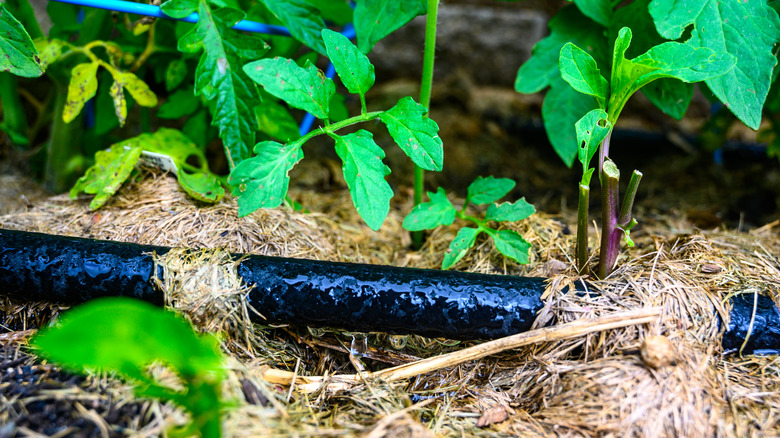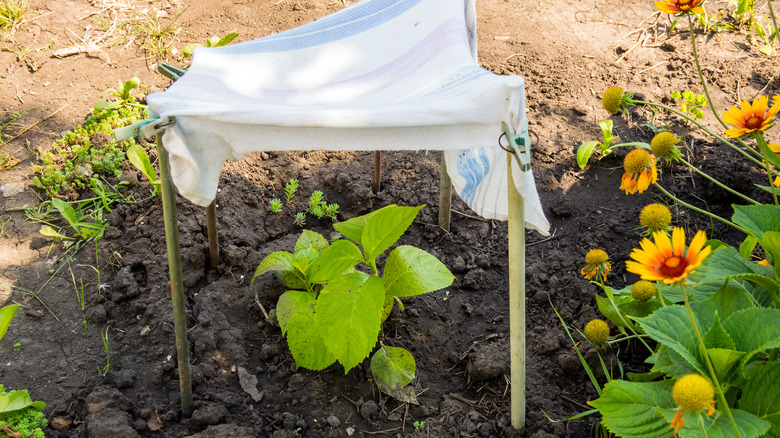How Should You Be Watering Your Plants Through A Heatwave
Although plants thrive in summer time, it's possible to have too much of a good thing when it comes to heat. When the temperature is becoming too high for you to feel comfortable, it's probably also too high for your plants. Giving your green friends the correct amount of water helps them survive the excessive temperatures. When watering during a heatwave, you should start by soaking plants before the hottest part of the day, rather than during peak temperatures. Having a base of moisture available gives them a better chance of surviving the stress of maximum temperatures and sun. Typically, the best time of day to water your plants is in the morning, both during a heatwave and during regular weather conditions.
You also need to pay attention to signs the plants are giving you when determining the best way to provide moisture in hot weather. Even if you soaked them during the morning hours, they may be sagging or drooping when the sun's full power begins beating on them. If so, it's okay to provide a bit more water.
You certainly don't want to overwater your plants, as this can be just as dangerous for them as exposing them to too much sun and heat. It takes some practice to get this just right, as each species is a little different. If the soil in a container feels damp in the first inch, it should be moist enough, even during times of excessive heat.
Certain plants need different watering schedules in excessive heat
Although it would be far easier if every type of plant needed the same amount of water during a heatwave, this isn't the case. Think about what types of greenery you have around your property and then provide moisture as required.
Established plants in a garden should be quite hardy and may have survived a heatwave in the past. However, they still need a bit of extra care and attention when the temperatures are high. They tend to benefit the most from a slow soaking in the morning before the maximum heat hits. This allows moisture to move all the way to the roots. Try to run a soaker hose around these plants for up to an hour once or twice a week. For an established lawn, running a sprinkler for about 30 minutes three times a week should provide the necessary water in significant heat.
If you recently planted grass or if you have a new vegetable or flower garden, the root systems likely aren't fully established. This makes it tougher for these plants to draw moisture from deep in the soil when they need it during excessive heat. Deep watering using a soaker hose is ideal for a new garden. Try watering two to three times a week for up to an hour at a time. With a newly seeded lawn, you may need to water briefly two or three times a day to keep the soil moist.
Other tips to help plants survive heatwaves
Beyond the proper watering techniques, you have some other options for helping your plants continue to thrive when the temperatures are extremely high.
In a landscaping area where you have plants and trees, start by adding more mulch to these areas, leaving at least a few inches of material on the ground. Mulch is a great way to make sure that the water you are adding to the soil in the garden stays in the soil. During extreme heatwaves, soil dries out faster through evaporation, leaving plants struggling to pull water and nutrients from the ground. A thicker layer of mulch protects the top layers of soil from receiving direct sunlight, allowing them to retain more moisture. This makes it easier for the root systems to find the resources they need to survive the extreme temperatures.
If you have the ability to add shade to tender plants in your garden area to combat the hottest parts of a sunny day, this can help them survive. You can purchase a shade cloth or make one yourself that can give your most susceptible areas of the garden a bit of heat relief. However, since the shade cloth fits onto poles at all four corners, it's not the sturdiest option. If you are experiencing high winds at the same time as the high temps, it may not stay in place without a bit of extra support through anchor ropes on the poles.


